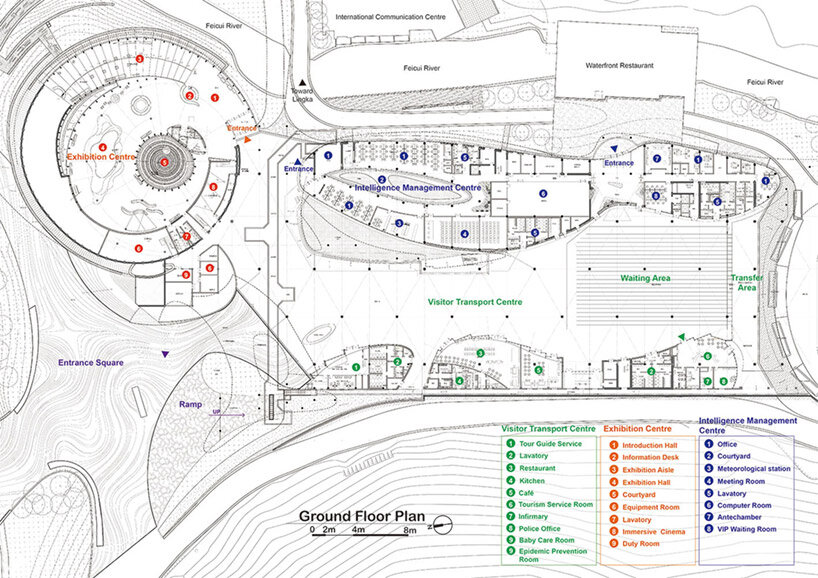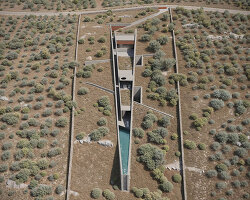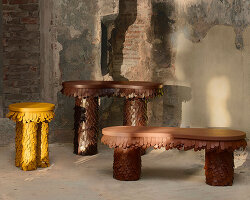a sculptural new gateway for jiuzhai valley
A team of architects at the Tsinghua University Architectural Design and Research Institute (THAD) take to the mountainous landscape of Sichuan Province to build a new visitor center in Jiuzhai Valley. Designed in harmony with its natural surroundings, the built space marks a welcoming threshold for the Jiuzhaigou National Park, a UNESCO World Heritage Site which is home to nine Tibetan villages.
The project’s completion celebrates the reopening of the park, which had seen significant damage after a 2017 earthquake. With this context in mind, the design team sculpts the low-lying visitor center to sensitively follow the contours of its site, achieving an architecture that its at once earthquake-resilient and intriguing to travelers with its undulating shingled rooftop and exposed timber structure.
 images courtesy Tsinghua University Architectural Design and Research Institute (THAD)
images courtesy Tsinghua University Architectural Design and Research Institute (THAD)
the new, multi-layered topography
The architects at THAD celebrate a dialogue between the Jiuzhai Valley Visitor Center and the wild forests toward which it leads. The team references the Tibetan tradition of Lingka — directly translating to ‘garden’ — which involves camping or picnicking in the woods or meadows. As such, the meandering pathways leading into the National Park guide visitors along a pleasant journey through the trees.
The gently curving rooftop, which shelters the center’s interior spaces, is thoughtfully crafted to reflect the ridgelines of the surrounding mountains. Fluidly weaving between these structures is an expansive pedestrian plaza, which is elevated atop an array of branching columns to enclose a luminous entrance hall.

combining modern technology with local craft
In the development of the organic visitor center, the team employs parametric design tools together with local craft. The sweeping rooftop most notably demonstrates these combined methods — the exposed timber structure showcases a complex, curving diagrid, which is finished with traditional slate shingles.
The material palette further harmonizes the project with its mountain setting. When viewed from above, the stone-clad complex is disguised among the rocky terrain. Meanwhile, visitors are greeted by warm, light-filled interior spaces, characterized by intricate woodwork and contemporary lighting.

the sweeping roof is finished with stone shingles modern technology is employed to design the structure’s curving diagrid
modern technology is employed to design the structure’s curving diagrid

the luminous interiors mark a welcoming gateway into the national park

the pedestrian plaza is elevated to enclose a bright entrance hall
 from above, the stone-clad complex is disguised among the rocky terrain
from above, the stone-clad complex is disguised among the rocky terrain

the multi-layered visitor center separates pedestrians from vehicular traffic



project info:
project title: Jiuzhai Valley Visitor Center
architecture: Tsinghua University Architectural Design and Research Institute (THAD)
location: Aba Prefecture, Sichuan Province, China




















